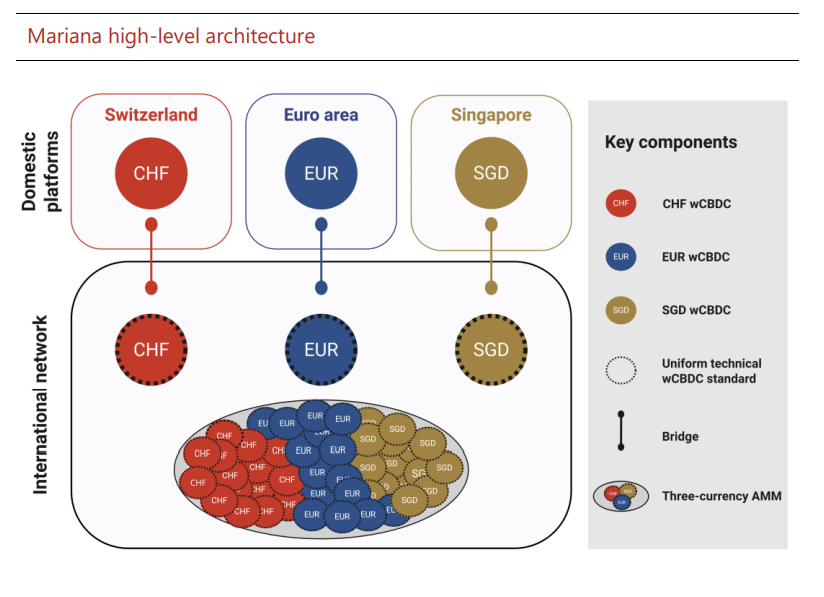In the context of the G20’s goal to improve cross-border payments, several projects have shown the feasibility of cross-border and FX transactions using wholesale central bank digital currency (wCBDC) arrangements and distributed ledger technology (DLT) platforms.
Project Mariana is a joint proof of concept (PoC) between the BIS Innovation Hub, Bank of France, Monetary Authority of Singapore and Swiss National Bank, which expands on these wCBDC experiments with the aim of improving the effectiveness, safety and transparency of FX trading and settlement. The project contributes to two key dimensions: first, it combines FX trading and settlement in cross-border transactions into a single instantaneous step using wCBDCs, as one possible mechanism for eliminating credit and settlement risk.
Second, given the diversity of technological solutions used in emerging domestic CBDC arrangements, it tests cross-border interoperability through wCBDC mobility beyond domestic boundaries and with a uniform technical wCBDC standard. Interoperability may allow for flexibility in a future tokenized financial system in which central banks’ autonomy is retained in the domestic context, while avoiding walled gardens.
The project thereby offers one possible approach to future-proofing the various domestic and regional wCBDC arrangements now under development. More specifically, Project Mariana expands on previous experimental work in three dimensions, borrowing from emerging decentralized finance (DeFi) technology. First, the project explores joint trading and settlement in wCBDCs using a so-called automated market-maker (AMM), expanding on previous cross-border wCBDC projects that focused on settlement only.
AMMs are smart contracts that use liquidity pools to automatically exchange tokenized assets, as opposed to the traditional process of matching buyers and sellers, eg using limit order books. Second, it tests a common standard for fungible wCBDC tokens, including design features based on central bank requirements. This uniform technical standard allows for (i) interoperability of the different wCBDCs within the same protocol, in particular the AMM; and (ii) the implementation of governance mechanisms at the token level without necessarily controlling the underlying platform or relying on a third party (ie a platform operator).
Third, Mariana investigates asset mobility between different blockchain-based networks using so-called bridges, expanding on previous projects that tested wCBDC settlement on a common platform. The bridges were designed to allow for the seamless and safe transfer of wCBDCs between networks with a combination of on-chain governance and robust and managed off-chain communication.


